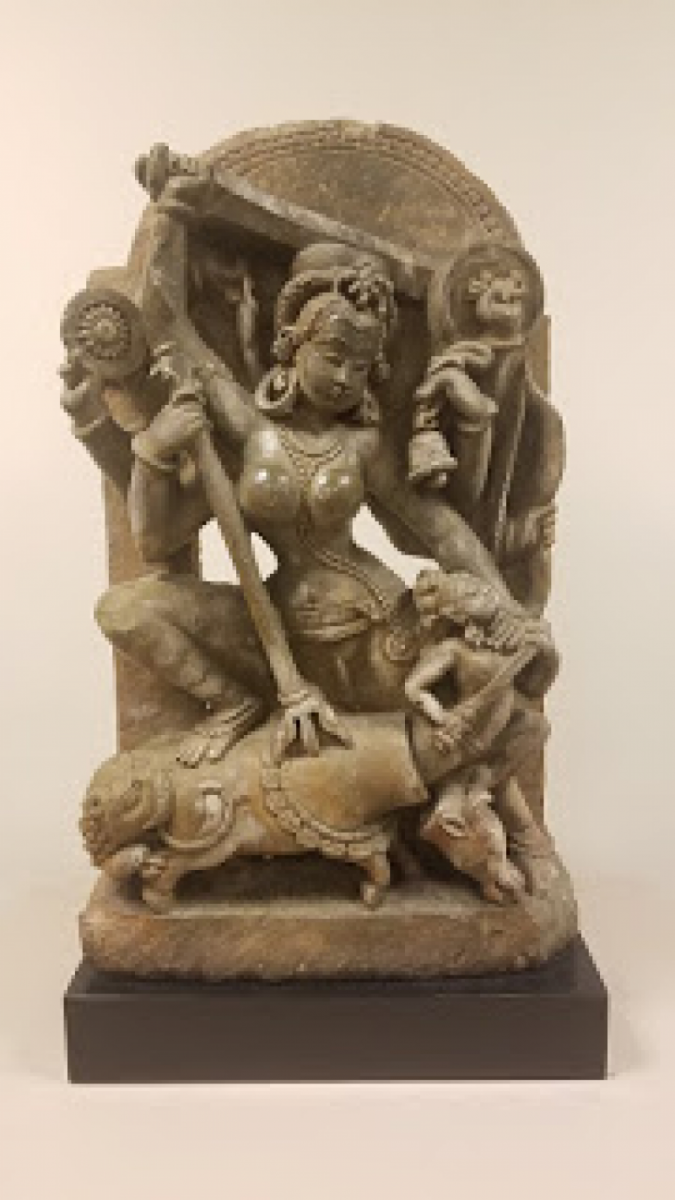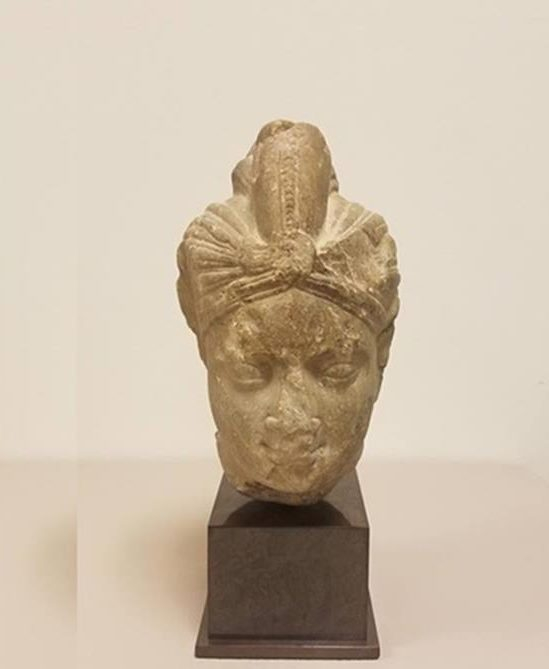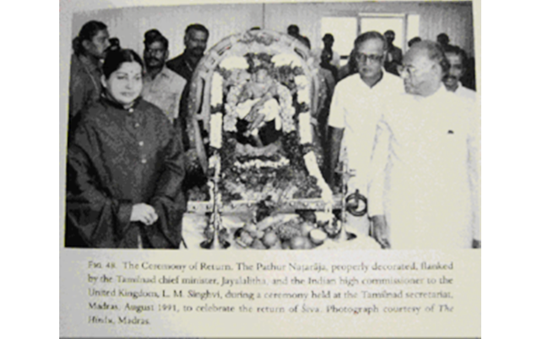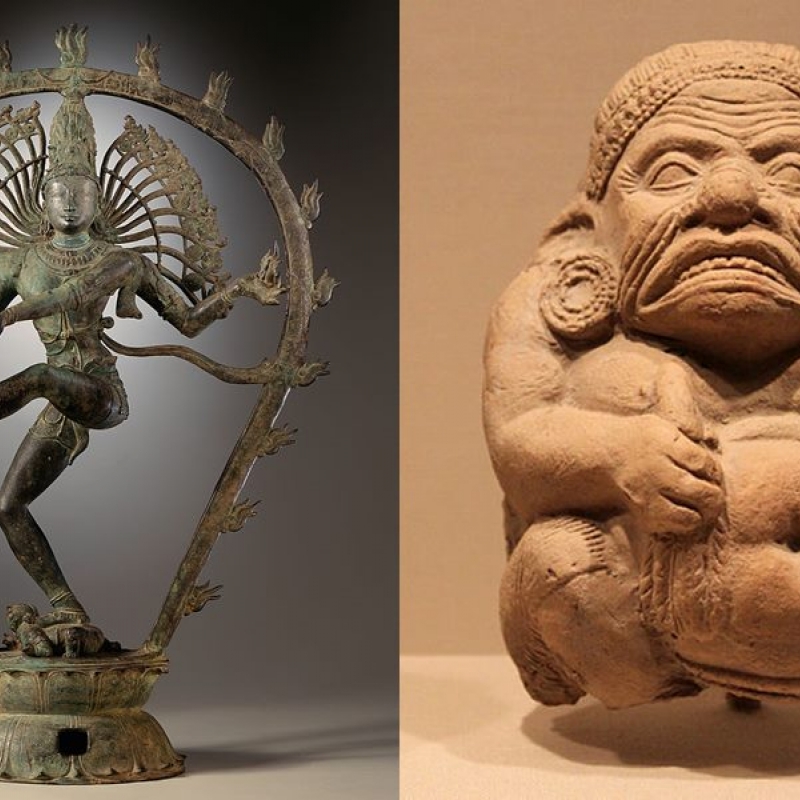India’s long-lost treasures will have a difficult homecoming, unless we pay greater attention to antiquities (Representational photo; Photo source: Wikimedia Commons)
In a recent piece of happy news, two ancient Indian sculptures came home to India from the New York’s Metropolitan Museum of Arts (Met). The artefacts—an eighth-century stone sculpture of Durga as Mahishasuramardhini, and a limestone sculpture identified as the 'Head of a Male Deity'—were donated to the Met in 2015 and 1986, respectively. After recognising their origin, the museum signed an agreement with the Archaeological Survey of India for their return.
This is not the first time that artefacts of Indian origin have been returned. It has been a part of diplomacy for a while now, bringing to global notice how many similar antiquities are currently exhibited in museums across the world. There is a long history of Indian antique objects finding their way illegally into international museums and private collections, but only a few have made it back.

The eighth-century stone sculpture of Durga as Mahishasuramardhini that was returned by the US Met to India in September 2018 (Photo source: Twitter)
While such artefacts had been smuggled out or even given away, prior to India’s independence in 1947, it was in the 19th century that this ‘exploitation of the country’s heritage’ became a concern, after the British defined what was 'valuable' in terms of heritage and antiquity. Bernard Cohn, American anthropologist and scholar of British colonialism in India, points to the colonial classification of valuable objects—those qualified for preservation as part of monuments, artefacts to be collected in museums for display, and objects that would be taken from India as mementoes and souvenirs—as markers of their relation to the natives. And thus emerged a market for Indian artefacts.
Of treasures lost and found
One of the earliest examples of an Indian sculpture acquired by a Western museum was an 'east Indian idol of black brasse' collected by William Fielding, a courtier to Charles I, who removed this idol from an Indian temple as a gift to his king in the 17th century. India was very much a ‘living museum’ for early colonialists. The defeat of Tipu Sultan in 1799 marked the beginning of the East India Company’s involvement in documenting India’s past. In the mid-19th century, several stone and metal sculptures and Amaravati marbles found their way to the Company’s museum as part of the Colonel Mackenzie collection, as well as the collection of Charles ‘Hindoo’ Stuart.

The Head of a Male Deity', which was reportedly returned to India by the US Met in September 2018 (Photo source: Twitter)
While there is only patchy documentation of objects being exported/smuggled out over the centuries, a few exceptional cases stick out. One is of the famous ‘Pathur Nataraja’ belonging to the Chola period, which found itself the subject of a British high court case in 1984–88. It was reportedly discovered in 1976 by a landless labourer, Ramamoorthi, who stole the statue from Pathur (Kerala) and sold it instead of informing the collector of the region. The statue then passed through a series of buyers until it was bought by the Bumper Development Oil Company of Canada and sent to London for repair, where it was identified as a stolen idol. The Nataraja was returned to Tamil Nadu in 1991. Another case is of the ‘Sivapuram Nataraja’, which was stolen from a hoard of bronze images in Thanjavur in 1956. It was bought by an American collector, Norton Simon, in 1973, who not only confessed that it was stolen, but also accepted that he had been spending thousands of dollars on smuggled artefacts. The statue was returned to India in 1986 after a 10-year lease to Simon.
Those that never got back home
From Khajuraho alone, over a hundred erotic sculptures had been stolen in 1965–70. Then there were two very famous cases of stolen antiques: almost 1300 miniature paintings were removed in a burglary at Jaipur’s City Palace Museum, and in 1968, 125 pieces of antique jewellery and 32 rare gold coins went missing after a theft at the National Museum, New Delhi. The early historic site of Chandraketugarh in West Bengal has been a hub of rampant antiquities smuggling, and objects from there are displayed in museums across the world, like the Guimet Museum in Paris, the Linden Museum and the Museum of Indian Art in Germany, the Ashmolean Museum in Oxford, and the New York Met. In India, they are known to be part of several private collections.
The legalities
So how can we ensure that these Indian treasures don’t stay lost forever? It comes down to the state of protection and conservation in India. Since Independence, hundreds of sites and monuments, including Centrally protected ones, have been vandalized. Most laws revolve around the prevention of the smuggling of Indian artefacts, and did not focus on retrieval. These laws were established under the colonial rule. The 1878 Treasure Trove Act, still in use, requires the finder to report any object/objects to proper government agents. The government can acquire it by paying the market value of that object to the owner, plus 20 per cent. In post-Independence India, the 1904 Ancient Monuments Preservation Act was superseded by the 1958 Ancient Monuments and Archaeological Sites and Remains Act. This act complemented the 1947 Antiquities Export Control Act to regulate the antiquities trade and allow the licensed export of antiquities.

A cut-out of the coverage of the return of the Pathur Nataraja to India in The Hindu (Photo source: Twitter)
In the global antiquities market, there has been a steady increase in demand for Indian objects and sculptures since the 19th and early 20th centuries, alongside the greater appreciation for Indian aesthetics. The 1950s and ’60s saw a large number of illegally exported Indian objects find their way to international art galleries and museums, especially in the US. Protection laws were unable to deal with smuggling cartels, and the seriousness of the situation resulted in stricter laws. The 1972 Antiquities and Art Treasures Act (amended in 1976), strictly banned export of any sort of archaeological object and imposed stricter vigilance on individual ownership. All archaeological objects and sites were taken under state ownership. Since then, there has been a concentrated effort to retrieve stolen Indian antiquities.
The way ahead
Incorporating archaeology and heritage conservation, as well as the required legal awareness in our education might sensitise people to these invaluable antiques. It would also help to encourage greater vigilance in panchayat and district-level officers, while supporting individual antiquarianism.
As for state departments and museums, auditing and registering collections and finds is of utmost importance. There should be a system of monetarily rewarding the official submission of such finds, to curb their sale in the black market. If not, India’s rich ancient heritage will cease to be accessible to its own people. Initiatives such as the one taken by the Met set an example, and open up a productive conversation and exchange of antiquities on a global scale.
Views expressed are personal. This article was also published on www.thestatesman.com on September 20, 2018.
Related Content
'On Cultural Patrimony': Interview with A. Srivathsan | Sahapedia












